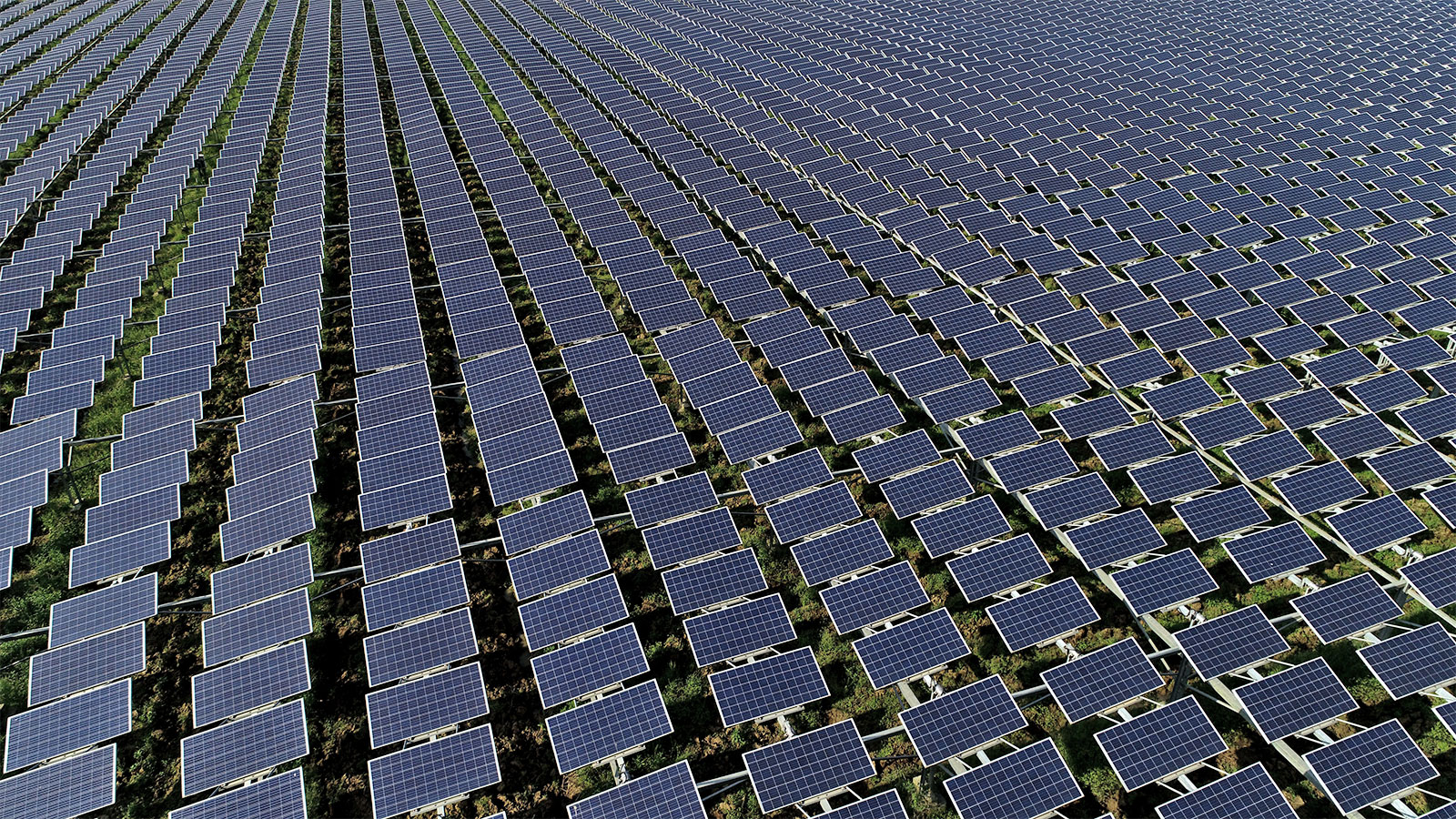U.S. Special Presidential Envoy for Climate John Kerry caused a stir over the weekend, telling the BBC that half of carbon emissions cuts in the coming decades will come from technologies “we don’t yet have.”
Kerry’s statement reignited a longstanding debate among climate hawks: Can we rely on tried-and-true technologies alone to meet emissions targets? How far can today’s solar panels, wind turbines, batteries, electric vehicles, and electric heat pumps get us without other technologies that have yet to prove themselves at scale?
Now a new report by the International Energy Agency, or IEA, has added new data to the fray. For the first time ever, the IEA modeled what it would take for the world to achieve a net-zero emissions energy system by 2050 and still have a 50 percent chance of limiting global warming to 1.5 degrees Celsius (2.7 degrees Fahrenheit).
The IEA’s road map, which was released Tuesday, includes an unprecedented deployment of existing technologies over the next decade: Renewable energy and electric vehicles would be scaled up faster and more extensively than they have been in many previous net-zero models.
In this version of the future, the sale of new gas-powered cars ends everywhere in the world by 2035. Ninety percent of global electricity generation comes from renewable sources by 2050. Our cars and buildings and industrial processes become so efficient — thanks to lighter materials, energy-saving appliances, and innovations like waste heat recovery — that, by 2050, the global economy will be 40 percent larger than it is today, but use 7 percent less energy.
The IEA model allows for some fossil fuels to remain in use in 2050, though any leftover gas- or coal-fired facilities would have to capture their emissions within two decades. But even with some remaining uses for fossil fuels, the IEA definitively states that no new oil, gas, or coal resources are required to meet the world’s energy demand beyond those already being tapped today.
Unlike most existing road maps to net zero, the IEA’s model also involves humankind making significant behavioral changes. In fact, 55 percent of the emissions cuts the IEA outlines require at least some active engagement by everyday people, whether that’s installing a solar-powered water heater or switching to an electric vehicle. About 8 percent of emissions cuts come from more pervasive lifestyle changes, like shifting away from single-use plastics, driving less, flying less, and adjusting the temperatures of our homes to limit heating and cooling.
But even with these behavioral changes and a hard-to-fathom scale-up of existing technology in place, about half of the world’s energy-related emissions would remain unmitigated. In other words, the IEA’s analysis aligns with what Kerry told the BBC: To get to net-zero, we’ll need to scale up clean, continually running power sources like geothermal plants and small nuclear reactors, as well as develop better batteries that can store energy for months at a time. We’ll need trucks and ships and planes that can run on hydrogen fuel or biofuels. And we’ll need new industrial processes to produce essential materials like steel and concrete.
Zeke Hausfather, a climate scientist and energy systems analyst for the Breakthrough Institute, an environmental think tank, said that the challenge is not proving that these technologies work — it’s making them commercially viable. (Hausfather was not involved in the IEA analysis.)
“It’s technologies that aren’t mature today — that aren’t cost effective compared to what we currently use, that will need to be innovated on and improved and brought into the market in a big way to reach our targets by 2050,” he told Grist.
Hausfather also pointed out that the IEA’s net-zero report actually relies much less on certain immature technologies than many previous models, because it finds that renewable energy and electric vehicles can be scaled up so quickly. By contrast, many of the models that the Intergovernmental Panel on Climate Change, or IPCC, analyzed for its 2018 report on limiting warming to 1.5 degrees Celsius rely heavily on carbon capture, storage, and utilization technology to mitigate an average of 15 gigatons of carbon dioxide. The rapid transition envisioned in the IEA’s report requires less than half that amount.
Past efforts to analyze what it would take to limit warming to 1.5 degrees Celsius have also been criticized for including enormous amounts of negative emissions technologies. This is where the “net” in “net zero” comes from — technologies that suck carbon out of the atmosphere balance out some level of inevitable residual emissions. But many past models also allow global temperature increases to overshoot 1.5 degrees C and rely on negative emissions to eventually cool the planet. The problem is that these technologies are still nascent and could require unsustainable amounts of energy and land to deploy at such a large scale. The IEA’s analysis does not allow for such risky temperature overshoot, and it ultimately requires only 1.9 gigatons of negative emissions, compared to the 3.5 to 16 gigatons included in IPCC models.
“This report reflects the fact that the world has been changing rapidly, that clean energy prices have been falling a lot faster than anyone predicted,” said Hausfather. “It’s still going to be an incredibly heavy lift to limit warming to one and a half degrees — and I personally wouldn’t bet on it.”



